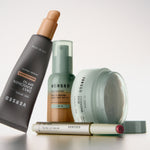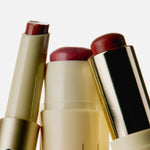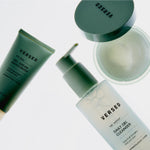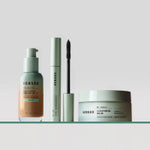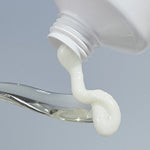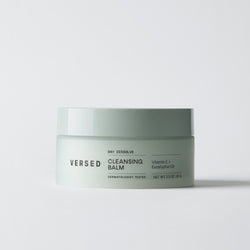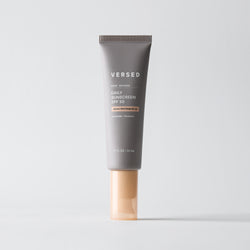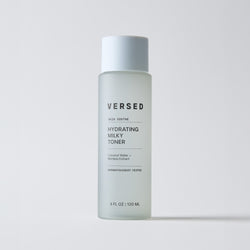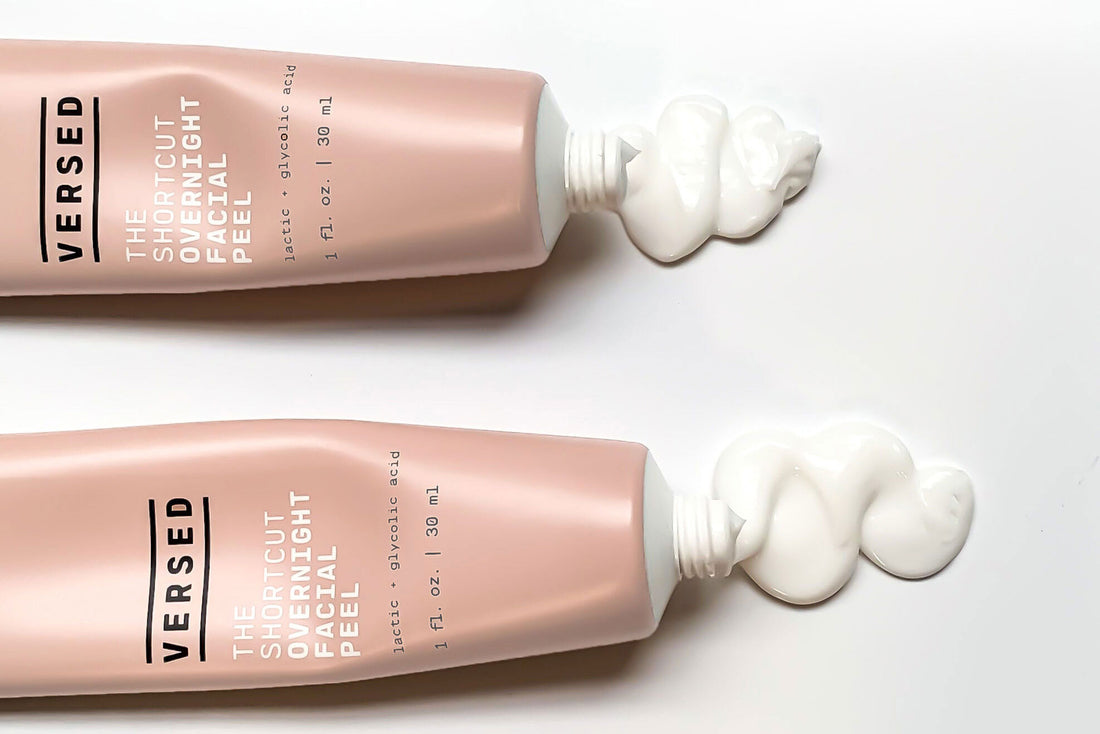The word “acid” has a negative—even scary—connotation, which may prevent some people from diving into acid-based skincare products. Here’s the thing, though: By avoiding acids, you skip some of the most effective and transformative skincare ingredients on the market. No matter how daunting they sound, acids are safe, effective, and yes, a little misunderstood. It’s time to clear that up, with help from cosmetic chemist Vanessa Thomas.
What Are Exfoliating Acids?
There are two types of exfoliation: physical and chemical. Physical involves sloughing off dead skin cells—and sometimes facial hair if you use a dermaplaning tool like Instant Gratification—manually.
In contrast, chemical exfoliation works at the ingredient level to dissolve the bonds between dead skin cells and the skin, effectively removing them. Acids fall under the chemical exfoliation category.
Our Buff It Out AHA Exfoliating Body Scrub offers the best of both worlds, manually polishing the skin with pumice while using its blend of AHAs to gently dissolve dead skin cells.
AHA vs. BHAs
In skincare, exfoliating acids can be separated into two categories: AHAs and BHAs, which stand for alpha hydroxy acids and beta hydroxy acids, respectively (the names refer to their chemical makeup). "AHAs are water-soluble and target skin's surface", says Thomas while "oil-soluble BHAs penetrate the skin more deeply."
What Are the Benefits of Exfoliating Acids?
The benefits of exfoliating acids are similar to the benefits of any exfoliant: Brighter tone, smoother skin texture, and unclogged pores. "Both AHAs and BHAs have been found to reduce the number of dead skin cells, allowing your skin to reflect more light and look more radiant. This can also be helpful in reducing the appearance of dark spots and pigmentation," says Thomas. Exfoliating also allows other skincare products to penetrate deeper into the skin, working harder and faster than they would otherwise. But acids are special in that they're multi-beneficial: they also boost cellular turnover, encourage collagen production, and provide substantial brightening effects on dark spots and uneven tone.What Is An AHA?
AHAs, which are typically found in fruits, milk, and sugarcane, “peel away the dead skin cells on the surface of your skin, revealing the fresh new skin cells underneath," says Thomas. While the benefits depend on the specific acid used, AHAs are generally known as the acid that helps treat hyperpigmentation, smooth bumpy texture, and soften signs of aging like dull tone and fine lines. These are the types of AHAs you'll often find in skincare:
Glycolic Acid
Derived from fruit and sugarcane and included in skincare products to treat and reverse apparent signs of aging, glycolic acid is great for hyperpigmentation. It’s also a go-to ingredient for improving skin texture and tone. As such, it’s common to see it in preventative products for aging skin (like our Instant Resurfacing Mask).
Lactic Acid
Naturally, this acid is derived from milk (but usually is lab-created, says Thomas) used to "exfoliate the skin, lighten dark spots, and improve the look of fine lines and wrinkles." Lactic acid is one of the most gentle, non-irritating AHAs—perfect for sensitive skin or those that are just dipping their toes into the acids pool. In fact, this acid is considered a humectant, which draws moisture into the skin. For these reasons, we included it in The Shortcut, which is specifically formulated with sensitive skin types in mind.
Citric Acid
Citric acid likely—and correctly—calls lemons, oranges, and grapefruit to mind, since it is present in citrus fruits. When it comes to skincare, however, citric acid is typically derived from corn or sugar beets. It's mainly used to treat acne, sun damage, and superficial pigmentation issues (like post-acne marks). It can also be used as a natural preservative in skincare products.
Kojic Acid
This AHA was discovered (and is still popular today) in Japan. Derived from mushrooms and other fungi, kojic acid brightens "by preventing the production of tyrosine, the amino acid responsible for producing melanin. It also works as an antioxidant in your skincare products" which can help protect the skin from future damage. Find it, among a blend of other AHAs, in our Daily Brightening Toner.
Mandelic Acid
Although less common than glycolic, lactic, and citric, mandelic acid is just as effective (especially for people who struggle with acne) thanks to its antibacterial qualities. Because it takes longer to penetrate the skin, there’s less of a chance that it will irritate sensitive skin.
What Is A BHA?
Beta hydroxy acids, on the other hand, are mostly known for treating acne because of their anti-inflammatory and antibacterial properties. Most importantly, this type of acid works at the pore-level (which is where breakouts form). BHAs may also "slow down the production of oils or sebum," adds Thomas, beneficial for oily skin types.
Salicylic Acid
The most common BHA is salicylic acid, which is derived from willow tree bark. It deeply penetrates oil glands, making it ideal for acne-prone and oily skin. It actually dissolves excess sebum and other pore-clogging material, which keeps skin clear and bright. As such, you’re likely to see this ingredient in acne-fighting products, like our Acne-Calming Cream Cleanser and Acne-Control Body Mist.
Other Types of Acids
What about tranexamic acid and azelaic acid? We know it's confusing, but both of these acids don't fall under either AHA or BHA category despite their namesake.
Tranexamic acid is derived from an essential amino acid and is best known for its brightening abilities. Similarly to kojic acid, it impedes melanin product and prevents dark spots from forming. Find both kojic and tranexamic acid formulated together in our Dark Spot Gel. It's so effective, many dermatologists recommend it as a treatment for melasma. It's pregnancy-safe, too, beneficial if you are struggling with the 'mask of pregnancy'.
Azelaic acid is "derived from yeast that occurs naturally on the skin" and is technically a dicarboxylic acid. It has a similar profile to AHAs and can be used alongside them. "Azelaic acid is an FDA-approved skincare ingredient used for the topical treatment of acne and rosacea that is often used in creams and cleansers. This acid has anti-inflammatory properties calm rosacea and redness. Even though azelaic acid is a powerful ingredient, it's gentle on the skin and safe for all skin types."
Can You Mix and Match Acids?
Combining acids can be incredibly beneficial—and yes, perfectly safe—since you're able to simultaneously treat various skin concerns. Combining multiple acids in one facial peel or mask results in a one-stop shop for everything from acne, dark spots, dryness, redness, and even skin sensitivities like eczema and rosacea. If you're on the sensitive side, you can always patch test and area first to make sure the formula works for you.
Shop acid-based products below.